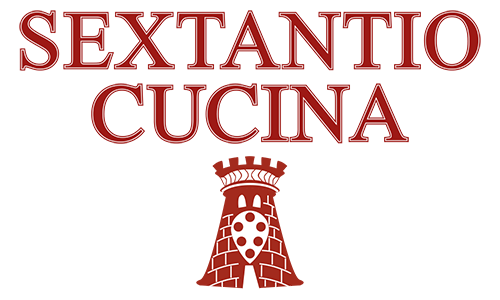Sextantio Cucina | Santo Stefano di Sessanio
THE SPACE
The Palazzo that houses our restaurant is subject to restrictions imposed by the Superintendency for Architectural and Landscape Heritage, and has been restored according to strict conservation criteria. The interior features two large arches resting on supporting columns and a central stone fireplace, recovered from the Barony of Carapelle.
The upper part housed a wool dyeing factory, a practice closely linked to the life of the community. The separate entrance opens onto Via Sotto gli Archi, one of the oldest streets in Santo Stefano di Sessanio, recognisable as a cov- ered external passageway that crosses buildings and alleys and connects the western and southern sides of the village, providing shelter from wind, rain and snow during the long mountain winters.
Many of the tables and chairs in the restaurant date back to before the 20th century; the ceramic plates and crockery are handcrafted in a workshop and inspired by research into everyday ceramics commissioned by the Museo delle Genti d’Abruzzo.
The same museum was commissioned to carry out research into popular cuisine, which served as a reference point for the menus’ proposal.
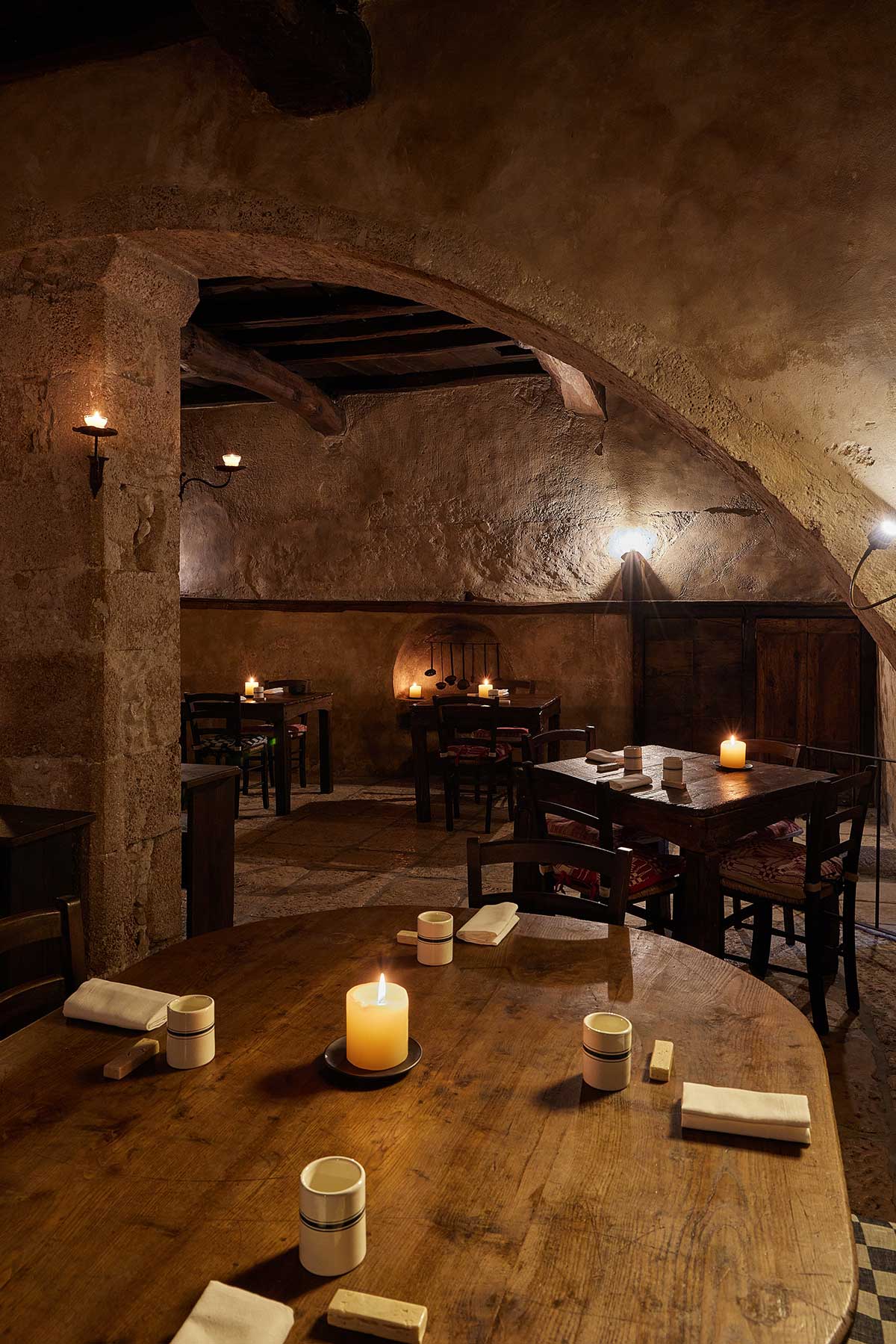
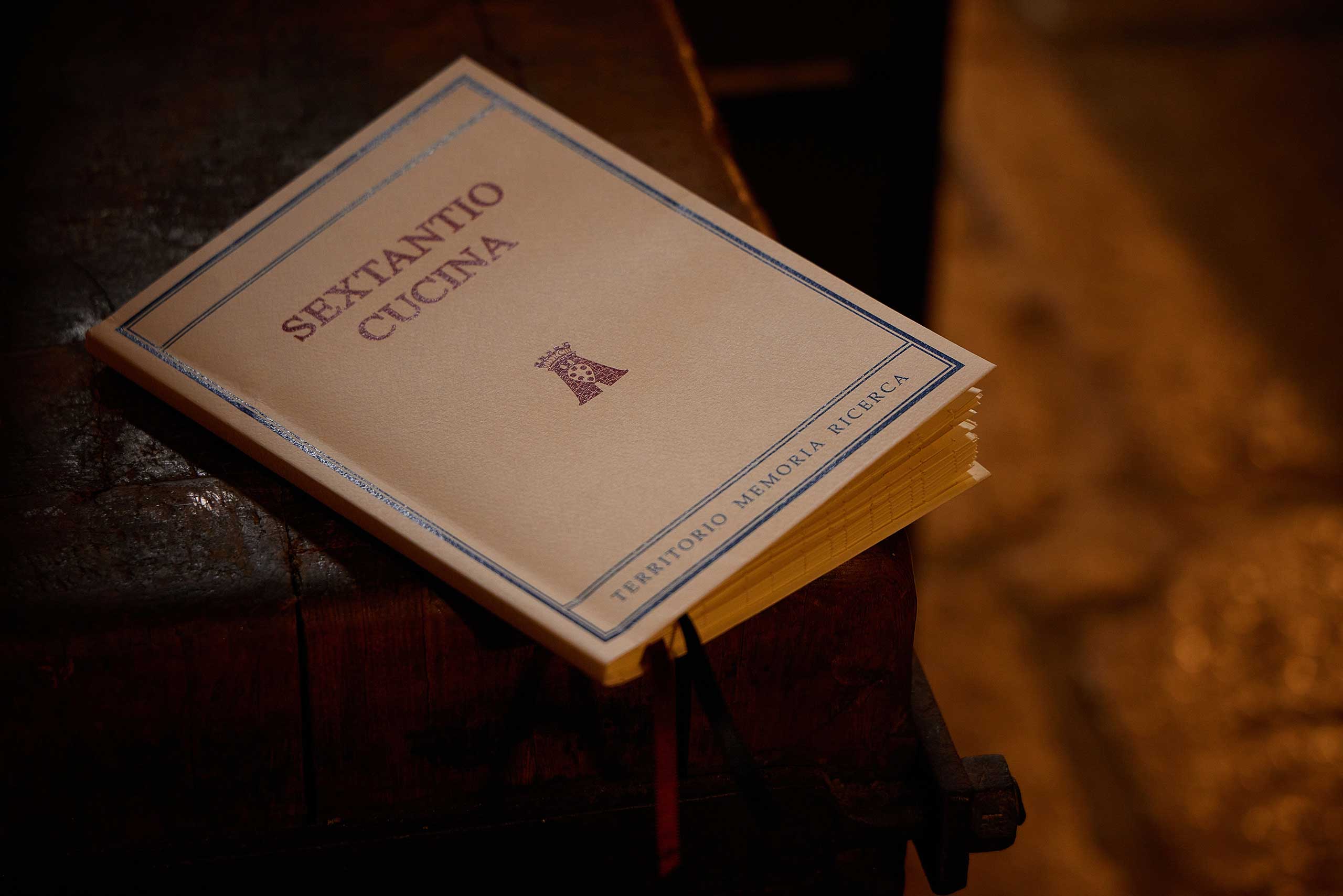
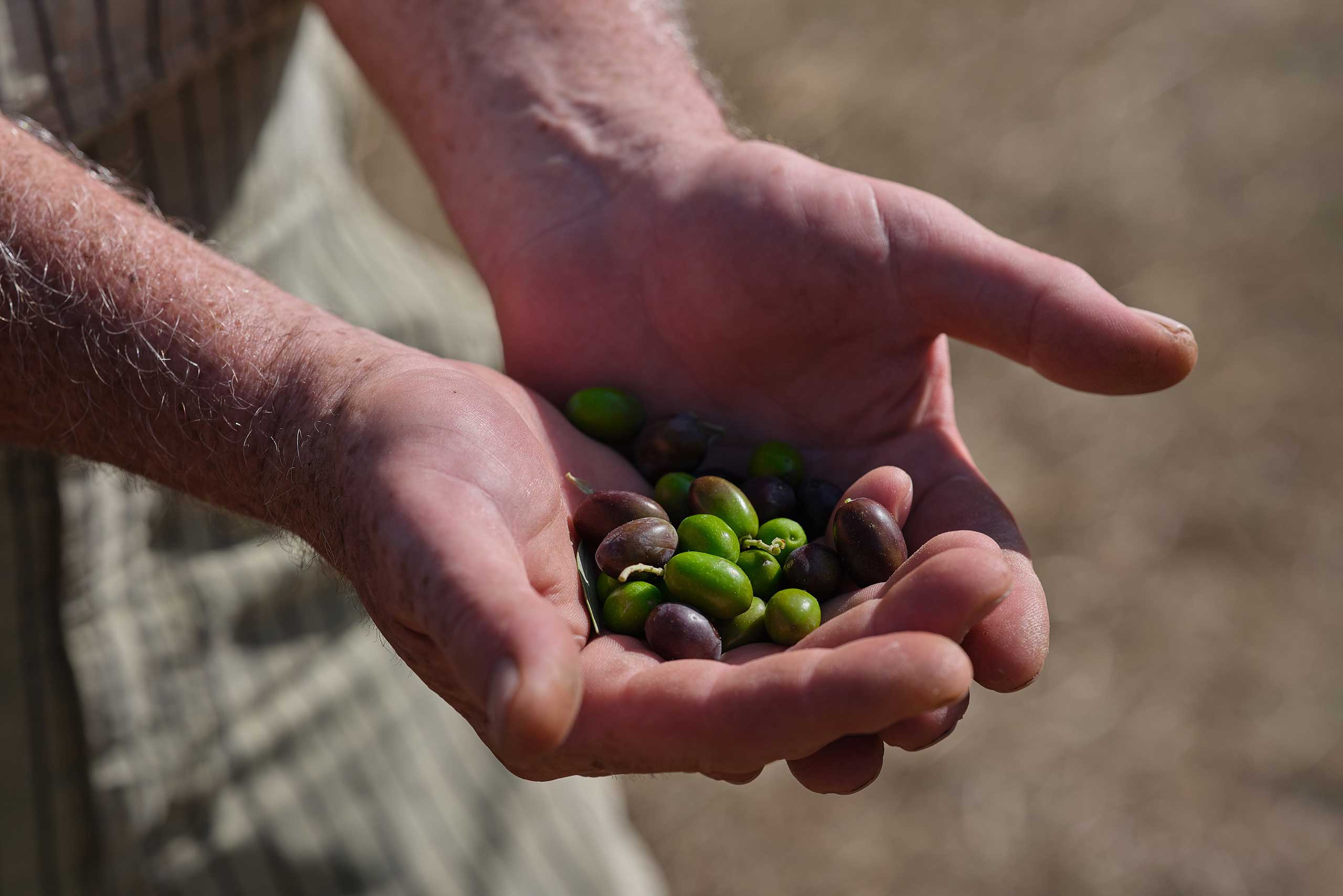
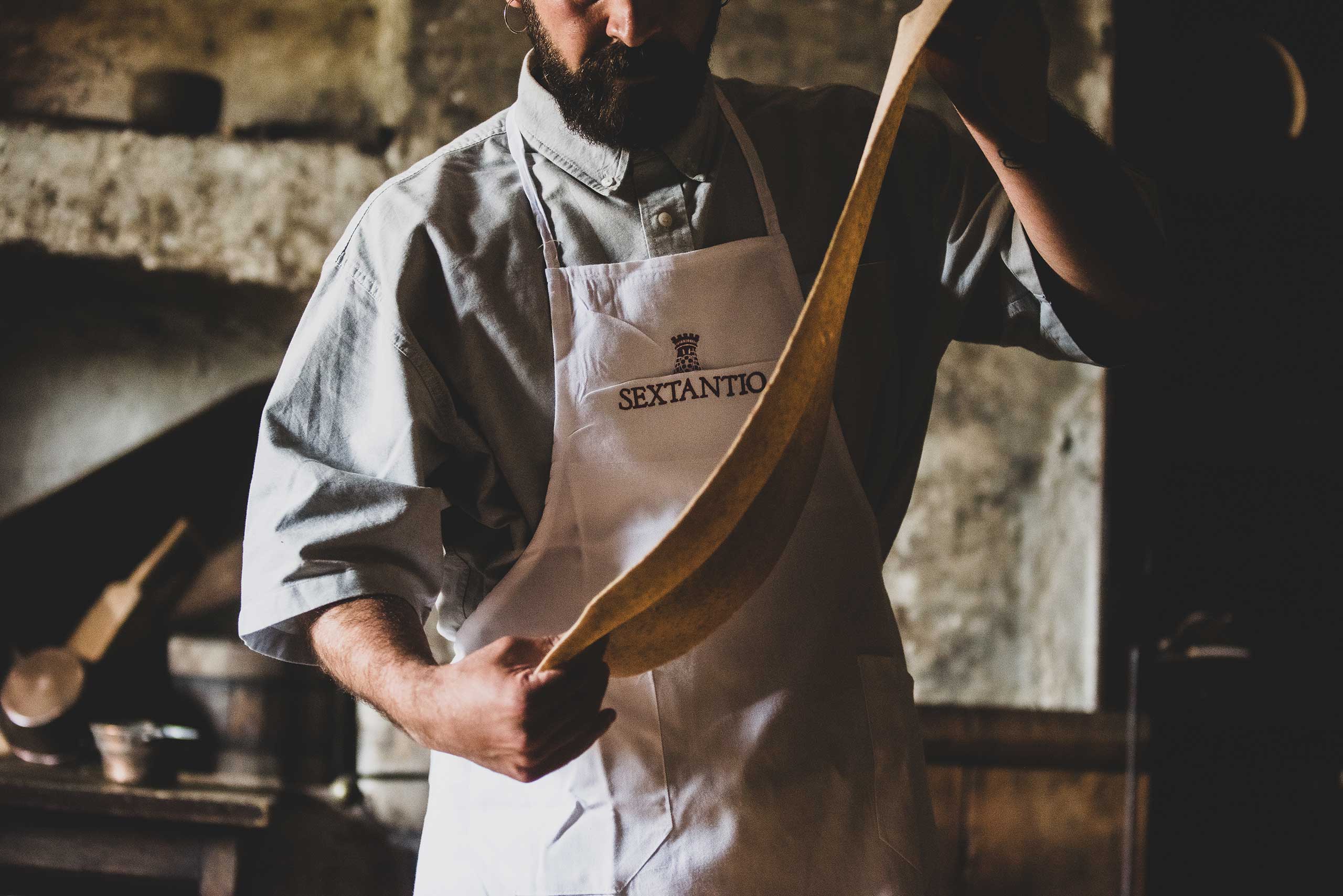
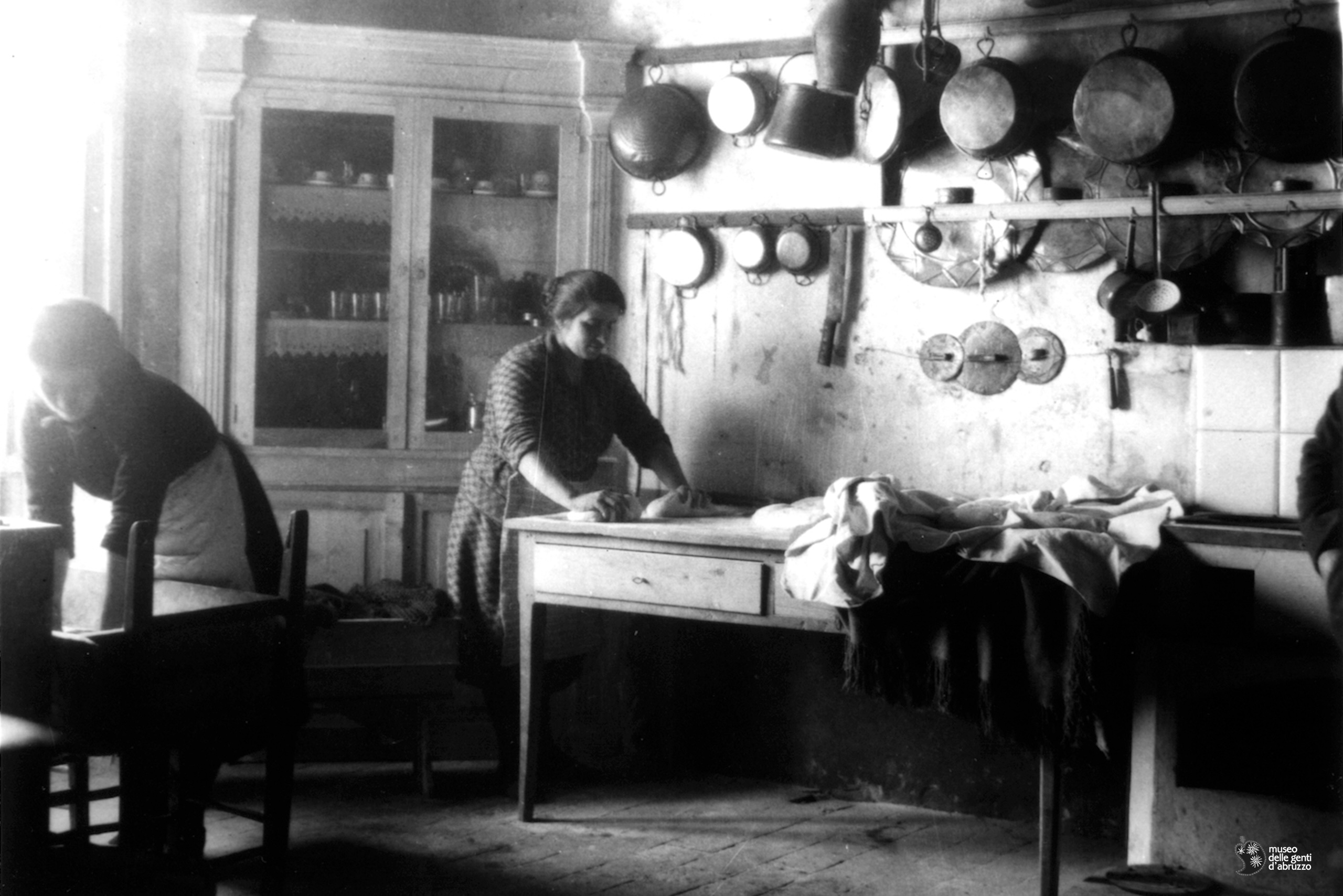
culture and sensory knowledge handed down among women of past generations
THE PROJECT
As part of a project founded on the safeguarding of the identity of place, the study of popular cuisine becomes an inevitable passage. The food system is, in fact, the primary vessel through which one comes to know the traditions, habits, and the social and symbolic values of a community. It is within this perspective that the research on popular cuisine commissioned by Sextantio by the Museum of the People of Abruzzo takes shape.
The research centred above all on recovering oral memory, through encounters and interviews with the elders of Santo Stefano di Sessanio, Castelvecchio Calvisio, Calascio, Castel del Monte, Barisciano and Carapelle.
From this arose an archive of more than seventy recipes, absent from regional cookbooks, some of which have fallen out of use.
What emerged was a self-sufficient cuisine, founded on the unyielding consumption of the ingredients at hand (potatoes, legumes, wild herbs and fruits), of salvaged foods, and of products preserved through ancestral techniques of survival.
A cuisine that reasserts itself daily with a repetitive cadence, within a cyclical agro-pastoral calendar, interrupted only by the time of festivity, with its ritual, abundant and communal consumption of food. The festive time, long awaited and prepared for with extended fasts, was in fact the only moment when foods rarely consumed were brought forth: meat, sweets, eggs, fish and other products of great nutritional and symbolic worth.
The recipes are most often presented in the form of a single dish, around which the family lived the most important gathering of the day, and for this reason our proposal does not always observe the division into categories of starters, first courses, main courses and side dishes.
A common trait of the testimonies is the absence of quantities in the exposition of a recipe. This absence arises from the vast store of material culture and sensory knowledge handed down among women of past generations, in a world where humans, plants and animals fused into a single ecosystem.
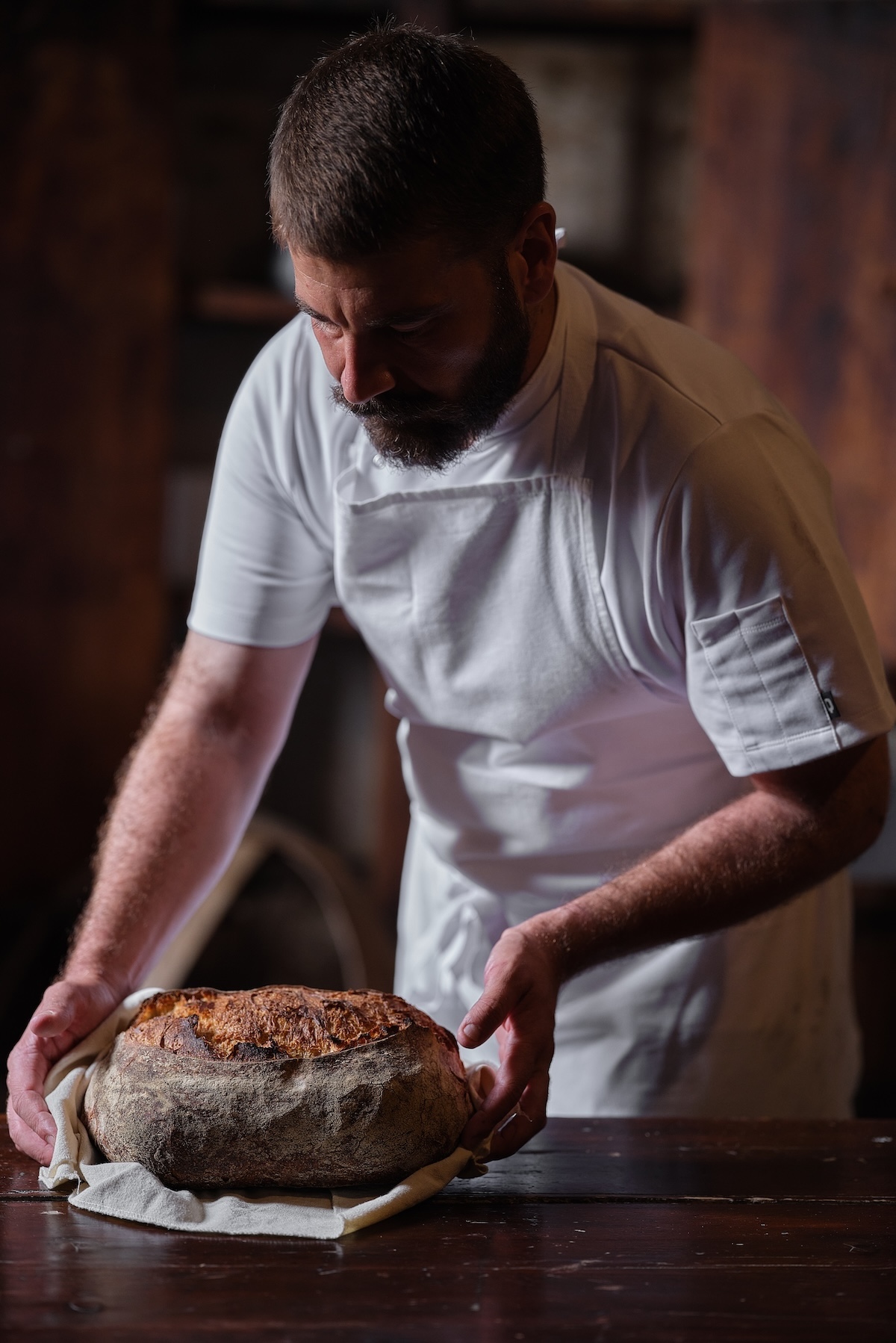
Dino Como. Rigour, method and a disciplined sense of taste
THE CUISINE
Our cuisine is shaped by mountain ingredients and by techniques that transform without betraying their essence. Each dish seeks depth of flavour, balance of textures and clarity of expression. It is a cuisine that combines rig- our with sensitivity, that restores to the present the testimony of the past while at the same time opening a gaze towards the future. At its helm is Dino Como, thirty-six years old, born in Palena into a family of restaurateurs, and someone who has breathed cuisine all his life.
For fifteen years Dino worked alongside Niko Romito, ten of these as his right hand at Reale, awarded with 3 Michelin Stars: an experience that instilled in him rigour, method and a disciplined sense of taste. Dino’s choice is clear: to remain in Abruzzo. Here he knows the land, its flavours and its stories. Here he wishes to affirm his own identity, in harmony with the values of the Sextantio project.
GASTRONOMIC PATHS
Roots: The philological menu born from a study conducted with the Museum of the People of Abruzzo, recreating recipes from the traditional agro-pastoral world.
Evolution: The chef’s personal journey, starting from the raw ingredients of the Abruzzo region to explore their potential and limits with technical and creative freedom.
À la carte: A selection of the most representative dishes from both menus.
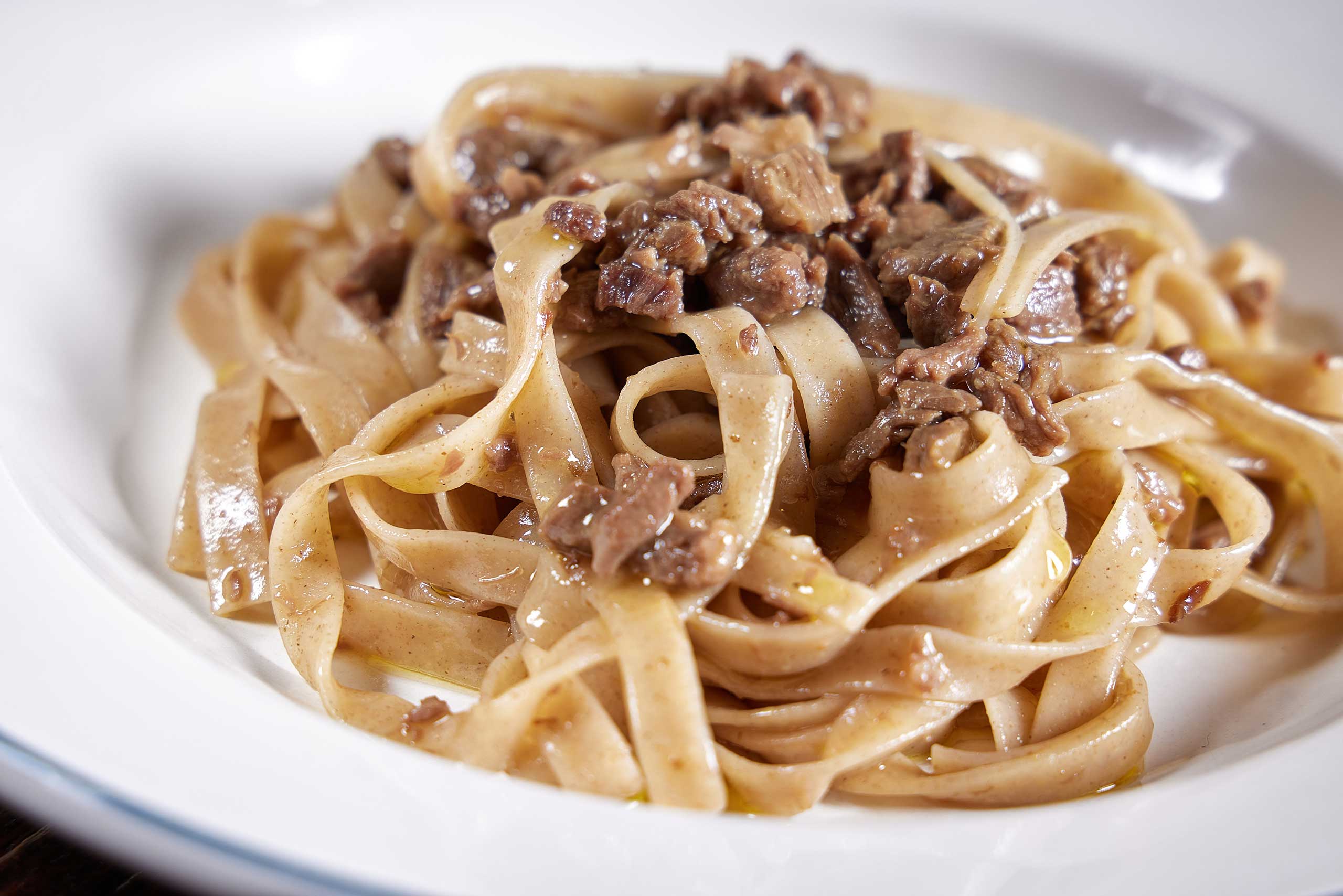
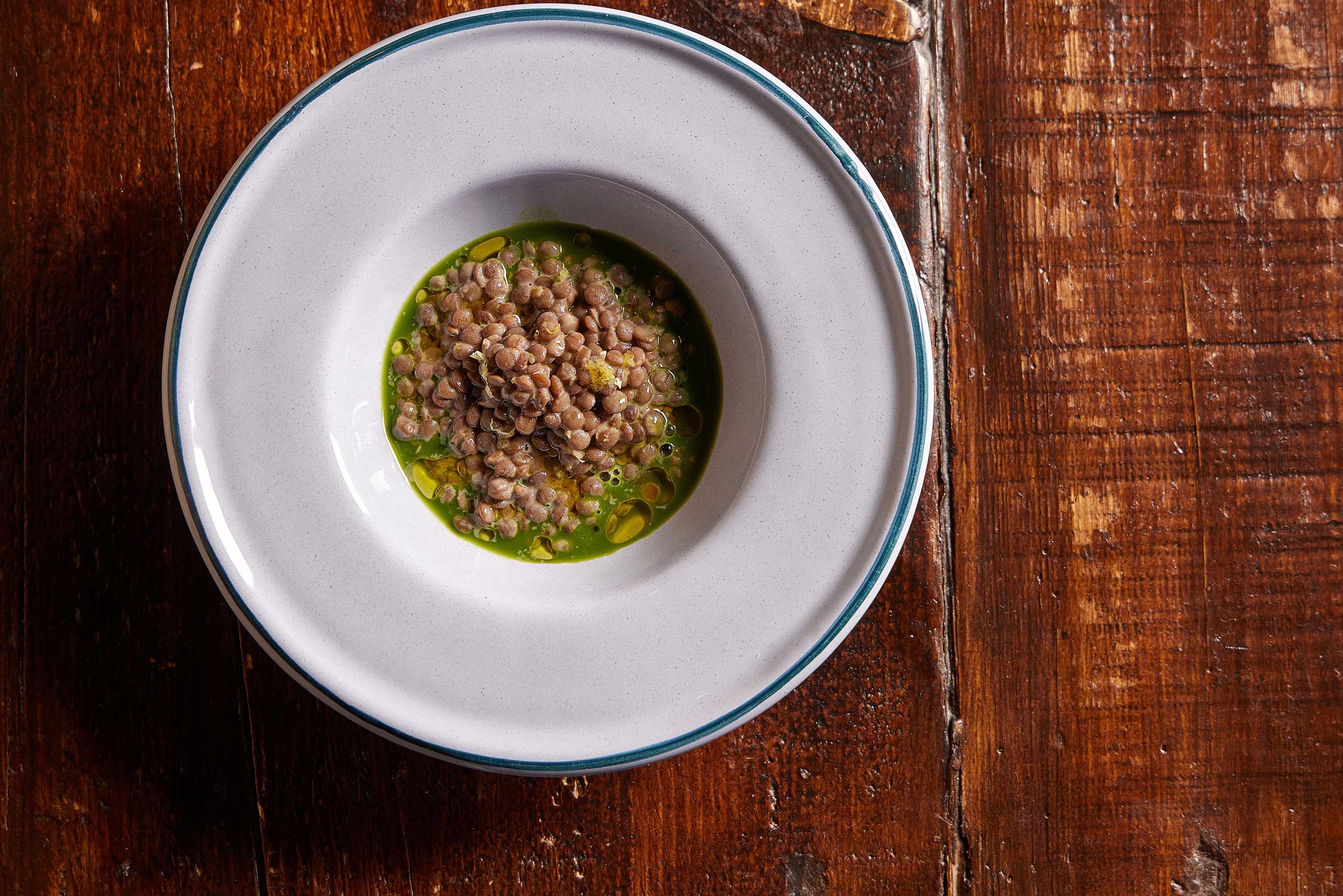

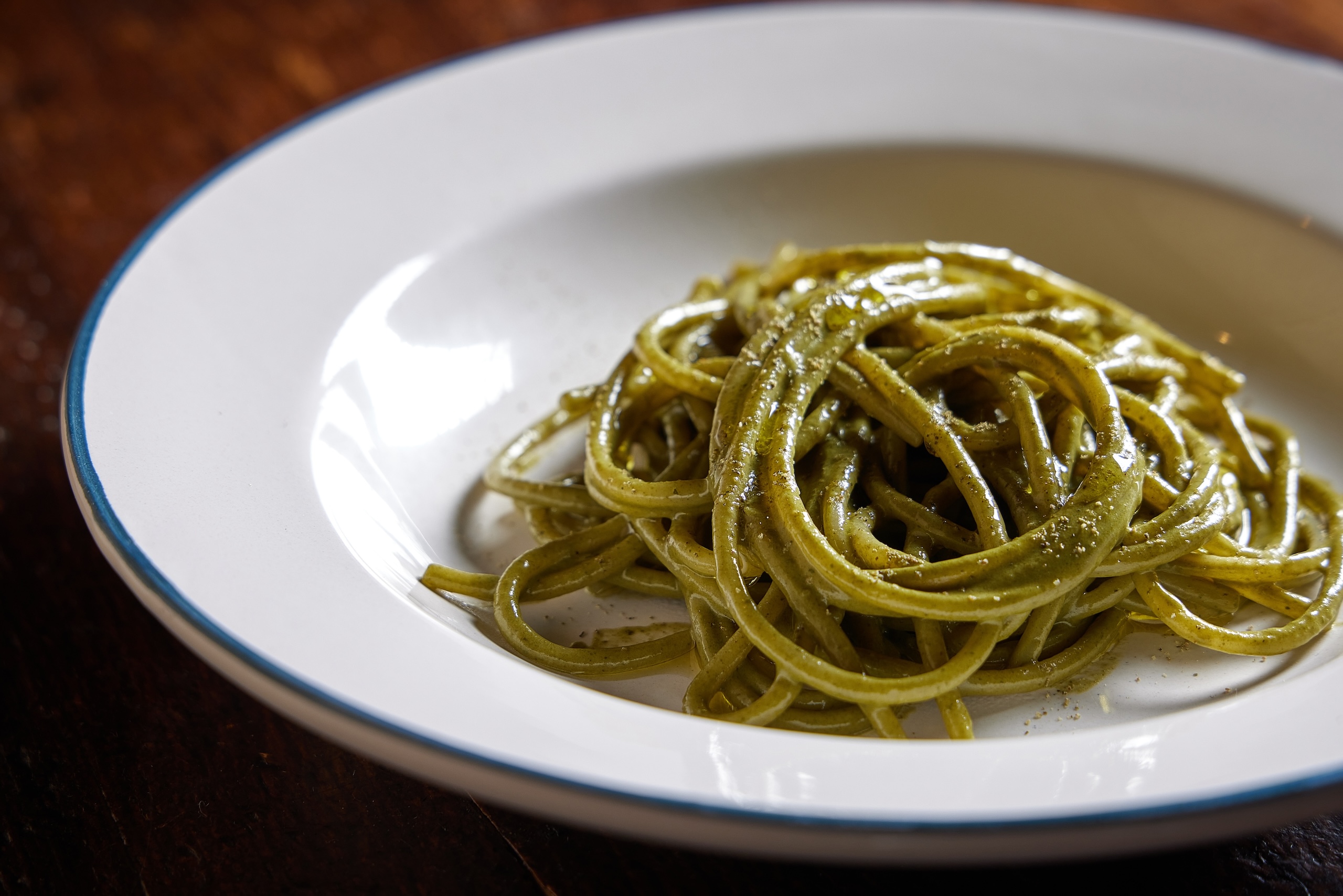
THE INGREDIENTS
Self-production lies at the heart of our work. The plant- based ingredients grow in our own garden and come from carefully selected farms; with the guidance of a landscape agronomist we strive, wherever possible, to start from self-produced seeds or, when necessary, from open-pollinated seeds (non-hybrid, non-GMO and untreated), from ancient fruits now difficult to find, and from wild-gathered spontaneous species with phytomagical properties.
The meats we use come from non-intensive farms, where animals grow according to natural rhythms, with access to pasture and a controlled diet of grass, hay and natural forage, free from artificial stimulants.
THE WINES
Our wine selection is based on extensive research into small independent producers, most of whom produce wines using spontaneous fermentation without the addition of selected yeasts.
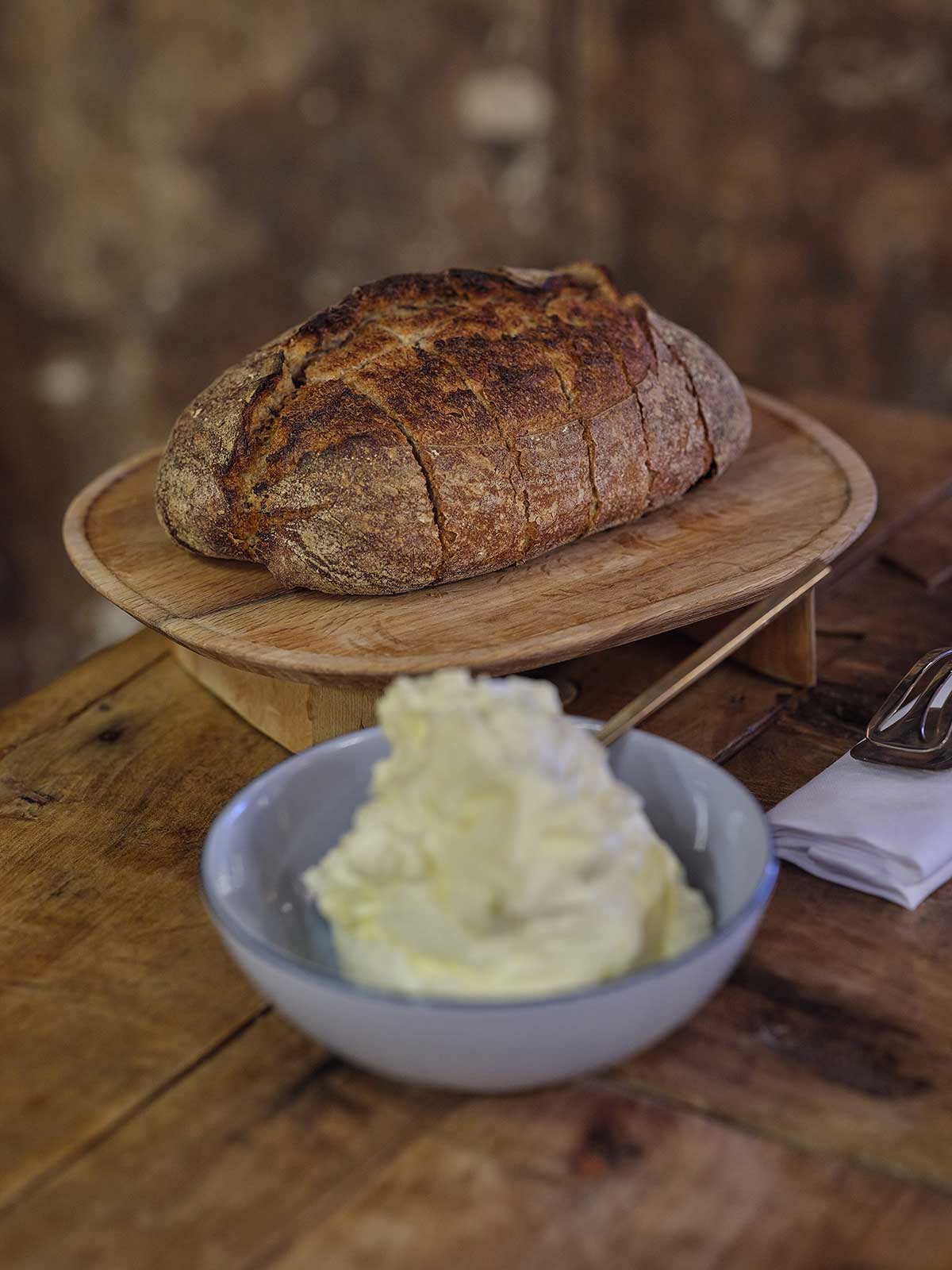
info & contacts
SEXTANTIO OSPITALITÀ DIFFUSA Srl
Sede Legale: Via Rastelli, 2 65010 Spoltore (PE)
P.Iva e CF 01886090685
Codice fiscale e numero di iscrizione: 01886090685
del Registro delle Imprese di PESCARA
Iscritta nella Sezione ORDINARIA il 29/12/2008
CCIAA NREA PE-136350
Capitale sociale in EURO: 100.000,00
Versato: 100.000,00
Santo Stefano di Sessanio is a fortified medieval village. It is located in the mountains of Abruzzo at 1250 meters above sea level, inside the Gran Sasso and Monti della Laga national park. The village is a classic example of an Italian medieval hill town, with perimeter walls encircling houses and squares. During the last century the “modernisation” of rural Italy compromised the architectural heritage of many of its countryside villages and towns.
